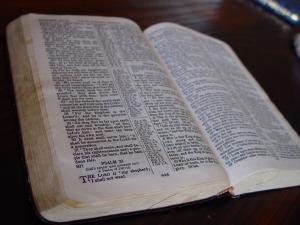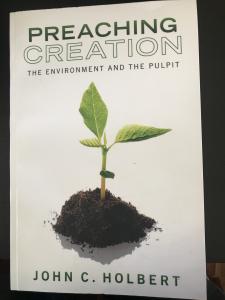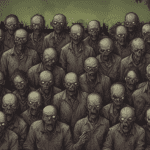(Lectionary for February 18, 2018)
Here is an ancient text from the Hebrew Bible that all are likely to know, because it involves a common weather phenomenon that practically everyone has seen many times in her life. I refer, of course, to a rainbow, that wonderfully colorful arc of beauty that regularly accompanies rain showers. Rainbows are caused by reflection, refraction, and dispersion of light in water droplets, when the water becomes in effect a prism, dividing the light into its spectrum of color. It is a grand display, and for millennia has painted the sky for human viewers, bringing awe and wonder in equal measure.
The Hebrews were no different. They too witnessed the gift of the rainbow, but in their usual profound reflections on the lives they lived, they offered an extraordinary series of meanings to the sky’s wonderful show. Genesis 9 provides several of these insights that retain their value and interest after three millennia.
The word they used for “rainbow” (kesheth) is at the same time the word employed for “bow,” as in the bow of war and hunt. This connection between the bow of battle, that ancient instrument of devastating human death and the often desperate search for food, and the colorful bow in the sky was, however, probably not original with the Hebrews. Their Canaanite forebears, those peoples who had lived in the Land of Promise several centuries before the Israelites took up residence, and many of whom continued to live there after they arrived and settled, had made this connection in their own literature. After their high god Baal had completed the creation of the world by defeating the forces of chaos in an enormous battle, he “hung his bow in the clouds” as a sign that the struggle was ended and that he had secured his throne over all the earth. The appearance of the rainbow was a continual reminder to the Canaanite people that Baal reigned supreme over them and that he deserved and expected proper sacrifice and deference to his power.
For the Hebrews the rainbow sign surely meant the presence of their God, YHWH, but the authors of their texts had other ideas about what the bow in the clouds fully meant. Their reflections on the rainbow and their God were nothing less than revolutionary in the history of theology, for the clear purpose of the bow is far more than a sign that the struggle for divine victory is over, though it surely did mean that to the Hebrews every bit as much as it meant Baal’s divine victory to the Canaanites. After all, the bow appears to Noah and YHWH after the terrible flood had destroyed the entire world, save the ark and its animals and single family. Common portraits of the end of the flood have Noah and his family exiting the ark, preceded by a huge array of squealing and squawking beasts heading off to repopulate the earth, all gazing at the lovely bow that announces the dawning of a new day. A superbly romantic picture!
Yet, a closer reading of the text suggests something rather different and rather more astonishing. YHWH shows Noah the rainbow all right, and announces that it is a sign of the covenant between God and him for all time. When the rainbow hangs in the clouds, its meaning for Noah is that “never again shall all flesh be cut off by the waters of a flood, and never again shall there be a flood to destroy the earth” (Gen.9:11). I readily admit that whenever I see a rainbow, I think of that covenant exactly, a living symbol that
God is so in love with me and with God’s earth that God, despite our continual human failings (as Gen.8:21-22 makes all too clear), God will never again seek to destroy what God has made. That hardly means that we, you and I, might not some terrible day destroy what God has made; we seem hell-bent on that destruction in ways large and small. From environmental degradation that threatens all creatures to our special American sick love affair with guns that kills our fellow citizens again and again, we aim—quite literally—to despoil what God has made and loves. Thus, the rainbow is a telling sign of God’s change of heart about you and me; never again will God destroy.
But now comes the surprise of the Hebrew tale. It turns out that the bow is not for us at all, at least not finally. The rainbow is actually set in the clouds for God! Each time God mentions the rainbow, the sentence is followed by the first person pronoun “I”. “When I bring clouds over the earth and the bow is seen in the clouds, I will remember my covenant” (Gen.9:14-15). “When the bow is in the clouds, I will see it and remember the everlasting covenant between God and every living creature” (Gen.9:16). It seems that God needs a continual reminder of the covenant that God has made with us! In effect, the rainbow is a string tied around God’s finger, a sign that God needs as a reminder that God is now in the perpetual loving business rather than in the occasional destroying business.
If this sounds slightly whimsical, it obviously is! The Hebrews liked nothing better than a story told with tongue in cheek! Yet, it is at the same time quite profound. As all who know the flood story, and all ancients did, save the Egyptians who had no story of the worldwide flood, it is a distinct problem to fit the picture of a God of unbreakable love into that watery cataclysm that was said to destroy all things. The Hebrew author attempted that theological high wire act by claiming that YHWH first destroyed the world due to the absolutely universal evil of the human beings (Gen.6:5), but then changed the divine mind, deciding to preserve the human creatures despite the fact that they remained, after the flood, distinctly evil (Gen.8:21)! In short, it is not we who were changed by the flood; it was God! And the rainbow reminds God again and again that it is God’s eternal decision to love us unreservedly now and forever. Surely, this is a profound and delightful way to address the question of theodicy: how can a loving God be said to destroy, thereby participating in evil? The answer of the story is that God once did a terrible act but does such things no more.
Well, that hardly solves all of our theological problems, of course, but it offers a tale that provides insight and wonder to our theological striving. What more can we ask of our rich scriptural heritage?















